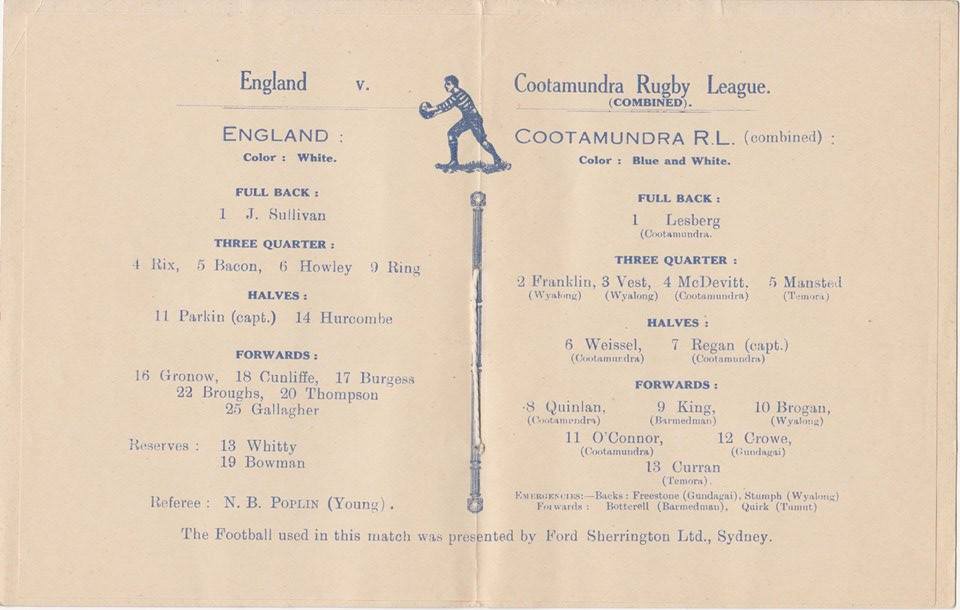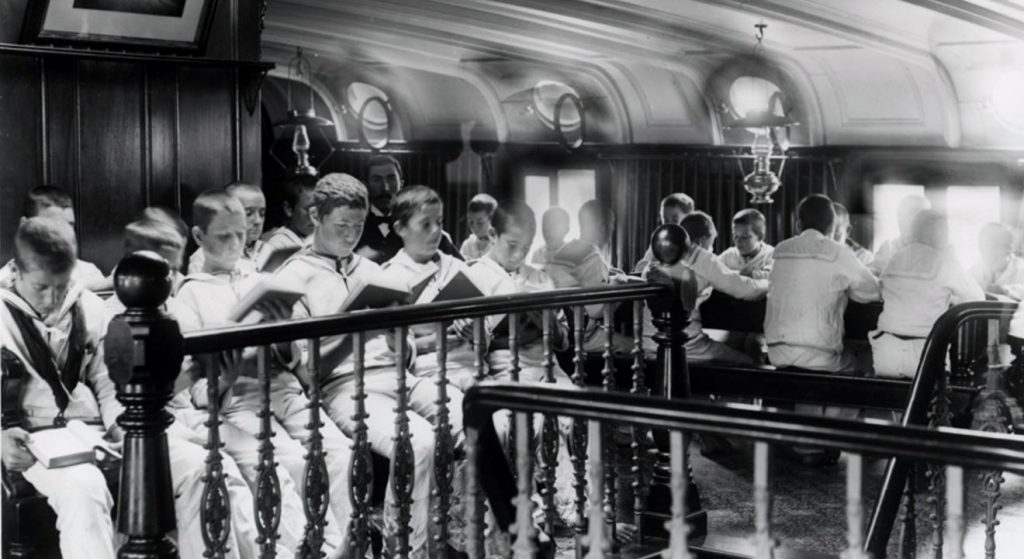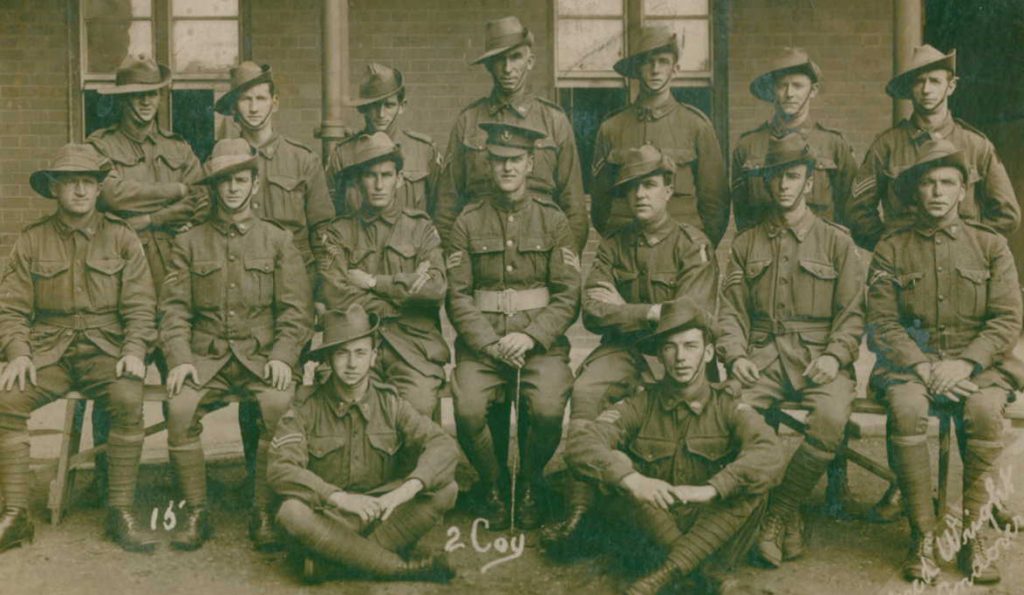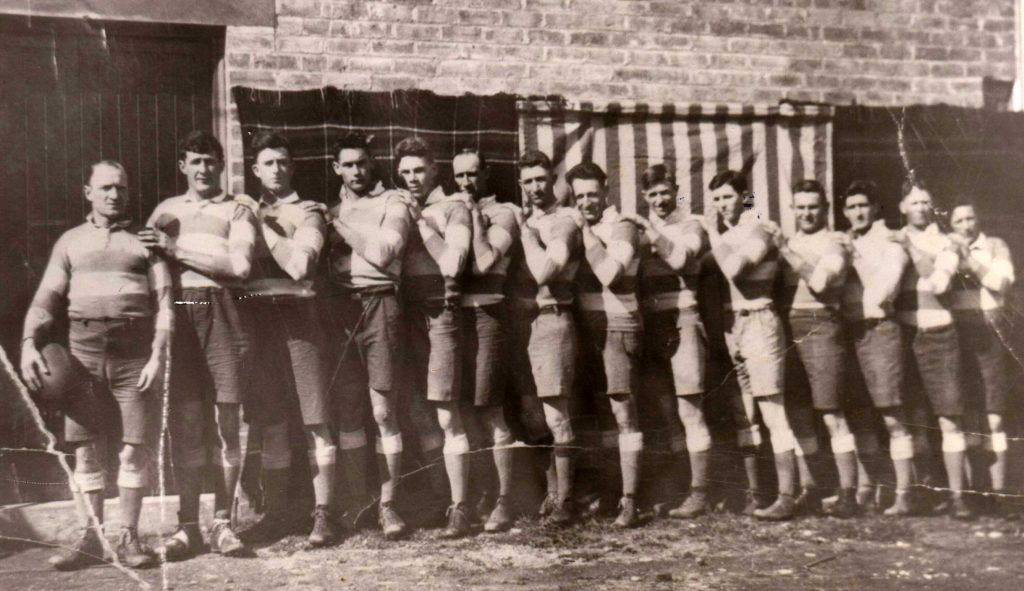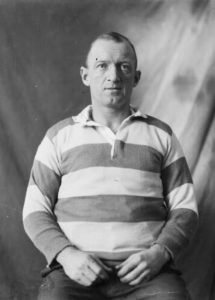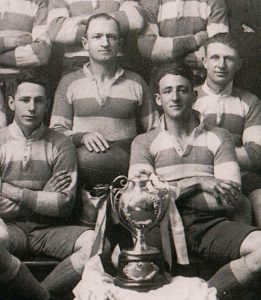
Phil Regan (top left) led the undefeated Cootamundra Maher Cup team in 1923. Others in shot are Ray Sheedy, Eric Weissel and Curtis ‘Dick’ Pellow. Source: Wal Galvin collection
He may or may not have been the first paid player-coach to leave a top city club and take a country team to a higher level, but he was the best. Within weeks of taking up the job in July 1922 he had transformed a tired Cootamundra team into champions.
For the next five years he caught the train back to Coota for the football season, took board at a hotel and inspired and developed the local lads. Phil Regan led the team in 54 Maher Cup matches, prevailing in all but seven.
In 1924, with a little help from their neighbours, they even took on the English.
After Cootamundra had been thrashed 30-2 at Gundagai in its first ever Maher Cup challenge in July 1922 they sought the services of Howard Hallett, South Sydney’s international fullback. However the deal fell through and Phil Regan from Glebe arrived instead. The next challenge was to be on 23 August.
Regan set about readying the blue and whites. He favoured young athletic players able to play smart open football rather than many of the regulars – older men more used to the ‘stoush’ culture of country Rugby. He transformed both personnel and attitudes, making seven changes for the next challenge, including five boys from the Junior team, one being 19-year Eric Weissel. The new look Coota boys joined 300 spectators on the train down to Tumut, returning to wild celebrations after a 19-11 victory. The next week more than 2000 people saw their first Maher Cup match in Cootamundra. The first of many. In the four remaining challenges of 1922 they scored 91-16 and the town got football fever.
The following year almost all the contenders in Maher Cup country had paid city coaches: Newtown’s Charlie ‘Boxer’ Russell came out to Harden-Murrumburrah, George Carstairs had a short stint at Barmedman followed by ‘Son’ Burge, Souths ‘Dutchy’ Anderson bought a pub at West Wyalong, while Temora snared ‘Dinny’ Cambell, and Gundagai and Tumut got George Moore and Clarrie Horder respectively from Souths. However while Phil returned for the next five seasons, the other appointments were all short-lived.
As the standard rose across all clubs Cootamundra still set the benchmark. Football became so much the focus of attention that attendances in the mid to late 1920s often well exceeded the population of the towns in which the matches were played. It became a ‘religion‘.
Who was this man from Glebe who was so influential in Maher Cup history?
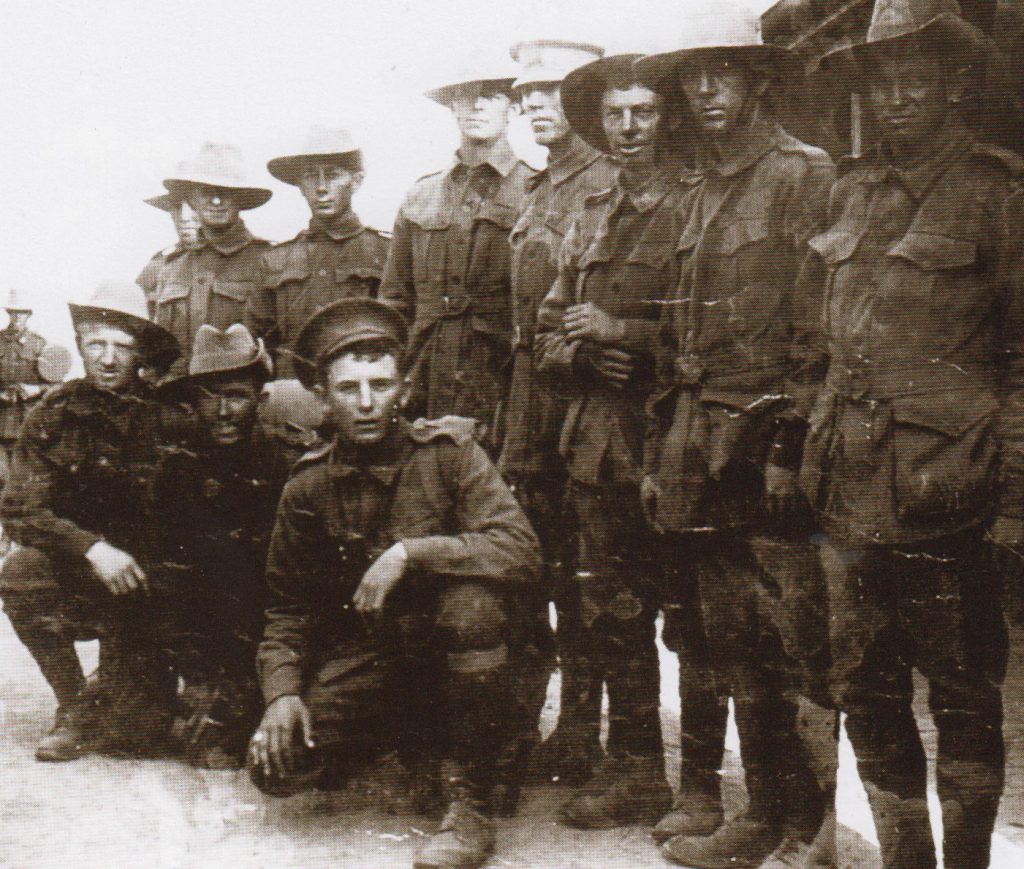
Phil Regan (kneeling far left) just before the Battle of Fromelles. Eddie Summers next to Phil, Bert Gray (front ) and Billy Stirton standing far right all played together for Glebe. Source: Max Solling: Grandeur & Grit: a history of Glebe (p.229).
He was born Phillip O’Regan on 21 January 1892 into a poor family which was to reside for generations within a stone’s throw of Glebe’s Wentworth Park home ground. When Phil was five his father, an immigrant from Cork, died, leaving mother Mary with four children and one on the way.
Phil was brought to the attention of the Court aged 11, charged with ‘habitual wandering’. Mary O’Regan did not seek to lose her little lad and Phillip’s contrite tears did not sway the magistrate, who sentenced him to the Nautical School Ship Sobraon, which, moored in the harbour housed up to 200 lads declared neglected or in need of behavioural modification. Although highly regimented the school did at least provide Phil with carpentry skills that enabled him to have a steady income outside football. According to his nephew it also resulted in a deep disrespect for governmental authority, which only increased as he grew older.
Older brother Peter Regan (born 1882, died 1917) played half-back for Glebe’s powerful Rugby Union side until 1910, when Phil, aged 18, replaced him at scrum half. The following year he joined most of promising young players in moving over to League. However with halves of the calibre of Chris McKivat and Les Cubitt representing Glebe, retaining a regular place in the firsts proved difficult.
In 1912 Phil started work at Cockatoo Island and was made captain of the Glebe Seconds. The twenty year-old, widely known as ‘Wombo’ (perhaps because of his short and stocky build), lead them through the season undefeated with 201 points for and 35 against, providing the first premiership for a Glebe Rugby League Club team (Solling, p.69).
Once McKivat retired in 1914 Phil became a firsts fixture and the 1915 season commenced in fine form and with great hope – 22,000 packing into Wentworth Park as tight as sardines.
In August 1915 he enlisted with a bunch of his football mates, including fellow Sobraon boy Billy Stirton, but while he was in camp he was allowed to play out the season to be just pipped for the premiership.
Footballing friend Fred ‘Wag’ Saunders was killed (Solling, p.138) less than four weeks into service on the Western Front. Phil also in the 56th Battalion at Fromelles was very much in the thick of it. He was severely wounded in the left thigh and buttocks on 5 August 1916. Attached to a training battalion when recovering from his injuries he was promoted before returning to France, only to be gassed and shot again in the shoulder and back on 24 April 1918 at the second Battle of Villers-Bretonneux. He arrived home in February 1919 and classified as medically unfit.
According to Max Solling’s interview with Jack Flitcroft (p.114), Phil ‘returned badly scarred…and took to the field for Glebe with shrapnel embedded in his thigh, so that when he was heavily tackled on hard ground his white pants became saturated with blood, something that never deterred him’.
His nephew reports that he never knew him to mention the war.
Continuing to represent Glebe firsts into the 1922 season, in July, with the team at the top of the Sydney table, he accepted an offer to head out to Cootamundra.
The standard of football on Maher Cup football rose rapidly as professional coaches crafted the talents of country athletes. No-one did a better job than Phil Regan at Cootamundra, and the careers of Eric Weissel and Jack Kingston in particular are testimony, the former in his 1938 retirement speech attributed his success to Phil Regan
According to Phil Grohala, he never married and was a popular local, known and loved by many, including the local constabulary, who would regularly return him home after a day at the races. His love for Rugby League remained and was his favourite pastime along with the gallops. Known to the family as Uncle Phillie he was a kind and gentle man.
Jack Flitcroft recalled that ‘Everything to do with Wombo was funny’ and his antics ‘greatly amused his team-mates’. These include ‘a novel ploy to bewilder opponents as the ball emerged from the scrum, he yelled ‘Upsheback’ and shoved the ball up the back of a forward who has charging forward’ (Solling, p.114)
In 1967 aged 75 Philip Regan died peacefully at the O’Regan family’s Glebe home that he had shared most of his life with younger brother Jack, sister-in-law Leoda and their family of 10 children. Jack was also a notable Glebe footballer.
References
- Solling, Max (2014). An act of bastardry: Rugby League axes its first club : Glebe District Rugby League Football Club 1908-1929. Sydney: Walla Walla Press.
- Grohala, Phil. Emails on the Maher Cup site.
- Public records on Ancestry.com
- Newspaper articles via Trove
- National Archives of Australia First World War Records
